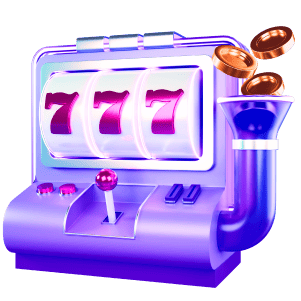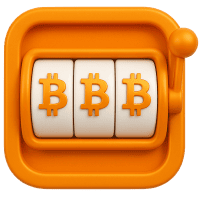In the fast-paced world of modern finance, where real-time news spreads instantly and market opportunities can vanish within seconds, a powerful psychological force often influences investor behavior: FOMO, or the Fear of Missing Out. While FOMO may sound like internet slang, its effects on financial decision-making are very real and often destructive.
This emotional response can drive investors to chase trends, abandon discipline, and make impulsive decisions, all in the hope of catching the next big win. It’s especially prevalent in volatile environments like cryptocurrencies and meme stocks, where price action is unpredictable, and hype can create a false sense of urgency. Understanding what FOMO is in trading is not just a psychological exercise. It’s essential for maintaining long-term investing success.
Defining FOMO in Trading and Finance
What is FOMO in trading? At its core, it’s a stress-induced impulse that pushes investors to act hastily for fear of missing a profitable opportunity. It manifests when traders observe others gaining and feel compelled to join in, regardless of whether it aligns with their strategy or logic. The emotional response is often stronger than the actual rationale behind the investment.
This form of anxiety is heightened in markets with rapid gains or dramatic news coverage. Crypto is a prime example, where sudden price spikes often lure inexperienced investors into buying at local tops. The irony is that FOMO often leads people to enter positions too late, just as prices are peaking, increasing the risk of loss.
The psychology is rooted in loss aversion and herd mentality. Investors fear being left behind more than they fear making a bad decision. This creates irrational market behavior, and those who fall victim to it may find themselves trapped in trades they never truly believed in. Recognizing what FOMO is in trading is the first step in protecting your capital and confidence.
How FOMO Affects Decision-Making in Stocks and Crypto
Once FOMO takes hold, logical thinking often takes a back seat. Traders begin chasing assets without proper research, influenced more by momentum and emotion than strategy or fundamentals. This can be particularly dangerous in fast-moving markets like stocks and crypto, where volatility is extreme and reversals are swift.
In traditional equities, FOMO tends to arise during bull markets when prices climb steadily. It might start with one strong earnings report or media buzz, then snowball as investors rush in. In crypto, the cycle is amplified by extreme price swings and hype. A coin might surge 50% in a single day, triggering mass panic buying – not grounded in value but fear of being left out.
This pressure often leads to poor entry points, late buying, and a tendency to hold through downturns longer than rational. Many investors compound their losses trying to “average down” a position that was impulsively taken in the first place. Learning how to stop FOMO means slowing down, consulting your plan, and prioritizing long-term thinking over short-term hype.
If a trade doesn’t meet your criteria, you’re not missing out. You’re staying disciplined. Discipline is the antidote to FOMO.
The Role of Social Media and Hype in Creating FOMO
Social media plays a central role in the amplification of FOMO. Platforms like X (formerly Twitter), Reddit, TikTok, and Discord have made it easy for information and misinformation to spread like wildfire. Traders are bombarded with screenshots of others’ gains, viral coin predictions, and influencer hype.
The problem is that social media is inherently curated. Losses are rarely shared, while wins are often exaggerated. The result is an illusion of effortless success, which causes others to chase those same trades, hoping for similar outcomes. This is especially dangerous in crypto, where influencers can pump tokens purely for engagement or profit.
The more noise you expose yourself to, the harder it becomes to stick to your own judgment. Many fall into the trap of making decisions based on Twitter sentiment rather than charts, fundamentals, or technical setups. Reducing FOMO means reducing noise. To understand how to deal with FOMO, investors must build filters for hype and learn to tune out signals that don’t align with their plan.
Being in control of your inputs is key to protecting your mental space. This is also a crucial tactic in learning how to stop FOMO.
Real Examples of FOMO in Markets
We’ve seen FOMO play out in some of the most well-known market frenzies of recent years. In late 2017, Bitcoin’s meteoric rise to nearly $20,000 created a stampede of latecomers entering at the peak. When the market corrected sharply, many lost money and confidence despite the long-term value of the asset.
Another example is the 2021 GameStop short squeeze. A movement born from Reddit’s WallStreetBets community became a global spectacle. As prices soared from $17 to $483, countless traders jumped in at the top, driven not by analysis but pure FOMO. While some early participants profited handsomely, many others were left holding overpriced shares when the bubble burst.
The same behavior has emerged with meme coins like Dogecoin or Shiba Inu, which have gone viral with little to no utility behind them. Many investors entered these coins not because of belief in their future, but because they didn’t want to miss the “next big thing.” In hindsight, they often wonder how to get over FOMO and the financial consequences it brought.
How to Recognize and Manage FOMO in Investing
Recognizing FOMO in yourself requires emotional awareness and honesty. So after asking, “What is FOMO in trading?”, ask yourself this as well:
- Am I investing because I believe in the asset, or because others are?
- Am I rushing a decision, skipping due diligence, or acting out of envy?
- Would I still take this trade if no one else was talking about it?
- Does this investment fit my risk profile and long-term financial strategy?
- Am I ready to hold through potential losses, or am I only here for quick profits?
These are signs that FOMO is at work.
One powerful strategy is pre-commitment. Define your entry rules, profit targets, and stop losses before trading. If the trade doesn’t meet your plan, don’t take it. No matter how “hot” it looks. Over time, this approach helps you stay consistent and calm.
Keeping a trading log is another way to break the emotional loop. Write down the reason for each trade. Review outcomes to see where FOMO led you astray. This process builds awareness and helps develop better habits. It’s a foundation for learning how to deal with FOMO.
Also, take breaks from the noise. Step away from charts. Limit time on hype-driven platforms. Ground yourself in your financial goals. Ultimately, knowing how to get over FOMO means trusting that opportunities are infinite, but your capital and peace of mind are not.































